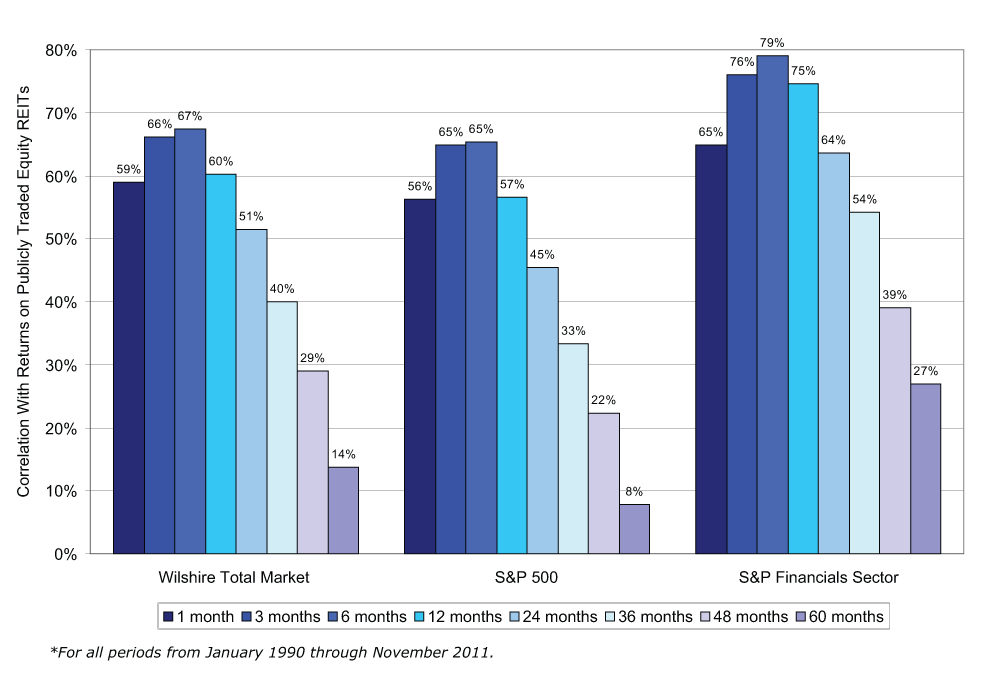3 Types of REITs You Should Consider For Your Portfolio
Post on: 30 Март, 2015 No Comment

REITs, or real estate investment trusts, are a crucial aspect of constructing any modern fixed-income or equity portfolio. Not only do they offer investors greater diversification. but they also provide the potential for lower overall risk and higher returns while generating dividend income and capital appreciation, making them a terrific counterbalance to cash, stocks, and bonds.
REITs typically own income-producing commercial properties or the mortgages on the properties. There are many different types of REITs available, and you can invest in REITs individually or through a mutual fund or ETF. Let’s take a look at a few of the most popular types of REITs, giving you a better idea of what kind of REITs you should add to your portfolio.
Nearly one quarter of all REIT investments are in freestanding retail properties and shopping malls. Currently, retail REITs represent the largest type of investment in America. In fact, nearly every shopping center in the U.S. is owned by an REIT. If you are considering investing in a retail REIT, you should first analyze the retail industry as a whole, taking into consideration the current financial health of the industry and what the future outlook looks like.
While the properties themselves are often an appreciating asset, retail REITs generate income from the rent paid by tenants. If poor sales are leading to cash flow problems for retailers, there is a greater likelihood that they may delay or default on their rent payments. If this occurs, a new tenant must be found, which is sometimes a difficult task. Thus, it’s important to invest in REITs that have the strongest anchor tenants, such as home improvement and grocery stores.
After assessing the retail industry, you should focus on the individual REITs, taking their balance sheets, debts, and profits into consideration. While the retail sector ebbs and flows with the economy, a strong REIT will be able to take advantage of a weak economy by purchasing valuable real estate at much lower prices, making it a win-win situation for investors.
Healthcare REITs
As a growing number of Americans are aging and the cost of healthcare continues to rise, healthcare REITs present the best potential opportunities for investors. These REITs invest in real estate used by hospitals, nursing facilities, medical centers, and retirement homes. A majority of healthcare facility operators rely upon private pay, Medicaid and Medicare reimbursements, and occupancy fees, but since the healthcare industry is exploding, so too are the profits of smart REIT investors.
When examining potential healthcare REITs, you should look for REITs that have a diversified customer base and a number of investments in different types of properties. Like any investing strategy, hedging your risk through diversification is ideal. Typically, an increased demand for healthcare, which the U.S. currently has and will likely have for some time, translates into nice profits for healthcare real estate investors. Ultimately, in addition to strong property and customer diversification, you should identify companies that have significant experience in the healthcare sector, strong balance sheets, and considerable access to inexpensive capital.
Residential REITs
Residential REITs own and manage multi-unit apartment buildings and manufactured housing properties. When investing in residential REITs, there are many factors you should consider before diving in. For instance, optimal markets for apartments are in areas where home prices are high in comparison to the rest of the country, making home ownership out-of-reach for much of the population. Markets like Los Angeles, San Francisco, and New York are prime examples of ideal markets for residential REITs, because the high cost of homes translates to an increased demand for rental units, increasing the amount landlords can charge for monthly rents. As such, the largest residential REITs usually focus on large urban locales.
Investors should also look for job and population growth in each specific market. In most cases, cities with a growing economy and a large number of readily available jobs attract a net inflow of people, which leads to increased demand and rising rents. As long as a specific market continues to have a rising demand and a limited supply of apartments, residential REITs should perform quite well.
The government made it possible to invest in commercial properties in 1960. However, low interest rates, the advent of mutual funds and ETFs, and the pre-2008 desire to own real estate have made REITs a popular investment option in recent years. REITs provide modern investors with an inexpensive and convenient way for individual investors to gain access to a diversified collection of income-producing real estate holdings. Due to the fact that they are not directly tied to stocks and bonds and move differently than them, they are an excellent addition to any investment portfolio. Therefore, if you are looking to diversify your penny stock portfolio and receive a nice dividend check in the process, an REIT may be an ideal investment option.














